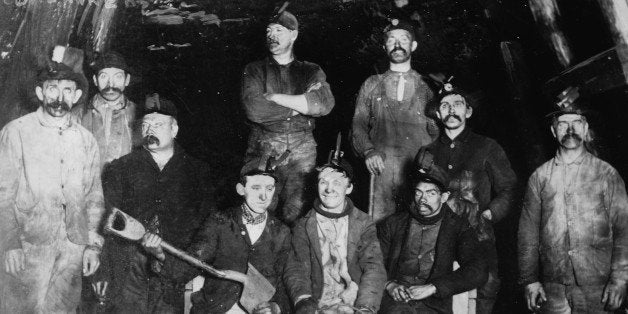
The proportion of coal miners who suffer from an advanced form of black lung disease has skyrocketed in central Appalachia in recent years, according to experts with the National Institute for Occupational Safety and Health.
In a letter published Monday in the American Journal of Respiratory and Critical Care Medicine, the NIOSH scientists wrote that the prevalence of progressive massive fibrosis, or PMF, a particularly lethal form of black lung, had reached its highest rate since the 1970s in Kentucky, Virginia and West Virginia.
"Each of these cases is a tragedy and represents a failure among all those responsible for preventing this severe disease," wrote David J. Blackley and Cara N. Halldin, officials with NIOSH, a branch of the Centers for Disease Control.
The data in the letter was based on NIOSH's Coal Workers’ Health Surveillance Program, which administers occasional chest examinations of working miners. The letter was first reported by BuzzFeed.
Coal miners develop black lung disease, or coal workers' pneumoconiosis, through prolonged exposure to the coal dust in a mine's atmosphere. It's a miserable affliction that forces miners to live out their last days coughing and gasping for air. NIOSH says the disease played a role in an estimated 10,000 deaths over a recent 10-year period.
According to Monday's letter, PMF was "virtually eradicated" just 15 years ago, but the sample of long-term underground miners from last year showed a nearly ten-fold increase, to 3.23 percent of workers, in the central Appalachian states. The officials attributed the alarming spike to two likely factors: workers' overexposure to coal dust, with many miners now working longer hours, or an "increased toxicity" in dust composition -- that is, even unhealthier air in today's mines.
As it grapples with a resurgence of black lung in many areas, the Labor Department recently announced it is updating and tightening its black lung regulations for the mining industry. Most notably, the reforms will lower a mine's allowable level of coal dust from 2.0 milligrams per cubic meter of air to 1.5, a move meant to force operators to better ventilate their mines.
The rule changes will also overhaul how operators must monitor their dust levels. Under the new regulations, miners will be equipped with a personal dust monitor that provides real-time readings of a mine's coal dust level. Under the old system, miners wore personal dust pumps that sampled the air and were then sent to regulators for analysis.
For years and years, coal operators have been able to game the system by submitting fraudulent dust samples to regulators, making the air seem less dangerous than it really is. The new dust monitors will likely make it harder for companies to mislead regulators. But as one industry observer recently told HuffPost, so long as companies are tasked with monitoring themselves, "there will always be ways to cheat."
